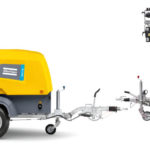Tackling a new DIY project can be a scary task; especially when it’s on something as important as your car and merge collector fabrication. There’s a definite sense of achievement, however, when you manage to pull it off and that’s exactly why we’re going to show you one of the most common steps needed when it comes to making a modification to the engine of a car: fabrication of merge collectors. If you’re looking to make something like race headers, which are an important part then you definitely need to have merge collectors.
We’ll go over everything you could think of possibly needing to ensure that your journey goes smooth, including challenges to be aware of as the project progresses, a few of our own tips that we’ve found have helped us, and we’ll touch on those more precise details that tend to be left out when it comes to fabricating.

What is Fabricating?
Fabricating doesn’t mean anything technical or fancy. It is the act of manufacturing something, or constructing it, with only the materials available to you in some form (whether complete, or need to be modified by yourself beforehand).
You can purchase collectors, of course. There is a wide range available, made from different grades of material but they can be expensive – and there’s nothing quite like the satisfaction of a job well done and a slightly heavier wallet, either. Making your own with the right instructions doesn’t have to be difficult, either, and there are plenty of good guides that can walk you through it step by step.
The Materials
Car engines get hot. That isn’t a myth, or a fact that doesn’t have evidence to back it up. When a car has been in high use, it’s not abnormal for the exhaust pipe to feel a little warm (read: hot!). This means that the material you pick needs to be able to handle high temperatures without sacrificing any of the quality you’re expecting.
It’s recommended to pick stainless steel. It comes in many different grades. The recommended two are either 304 grade, or 321 grade. To give you an idea, 321 grade is also classed as ‘aircraft grade’ which makes 304 the common choice for this sort of product – it’s not too expensive, and thermal conductivity is kept to a low, meaning you don’t need to go to other lengths to ensure that your exhaust energy isn’t escaping from the pipe. You want it to stay in there!
Another benefit of stainless steel is that it doesn’t rust, unlike other metals, and gives you a much nicer and cleaner finish. While cosmetics aren’t always the important part of fabrication and the point is to have a working item at the end, it’s still always a benefit to have something that works as described and looks good to boot.
Sometimes, it’s queried why aluminium isn’t a usable material, and this is easily explained. While aluminium is cheaper and lighter, it’s also not very strong when it comes to heat and engines get hot. Once aluminium heats up, it loses some of its integrity and becomes much weaker, to the point that it’s almost at its melting point and completely useless. It’s unable to handle the heat of an engine or an exhaust.
The Hows and Whys
When it comes to getting a car working, it’s known that you need to get the engine ticking over. You also need to ensure that the exhaust system is turning over too. When you’re looking to make race headers, the idea behind them is to smooth out the process that happens when you’ve got the exhaust ticking over.
Basically, once you turn that key or press that starter button, the car kicks into gear and starts a series of processes. Once there’s power to the engine, a valve known as the exhaust valve opens up. This causes pressure to travel down to the car’s exhaust – and this pressure travels at an expressive speed, coming in at the speed of sound.
This continues as the valve stays open, and then exits through the exhaust pipe. This whole process is what we want to be smoother and that can be achieved with race headers, which require merge collector fabrication.
You’ve probably seen a car expel a cloud of smoke from the exhaust pipe, and this is exactly it’s job. To remove all gas particles from the engine at the initial stroke of power to the exhaust. The pressure is continuously supplied, and while some is expelled from the car, some of it is also sent right back in towards the cylinder. This is negative pressure.
If you create the merge collector properly, you can help time everything properly to make sure that the pressure waves are working in sync to start each process and ensure each cylinder is being used to its full capacity.
Creation
There are computer programmes out there that can actually design the header for you that are known as paramtric exhaust modelling programmes, complete with the angles needed and the dimensions to get the best results, but even without these it is possible to fabricate your own and there are many guides out there that describe the progress depending on the model and year of the car you want to work on.









